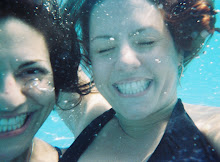
At Hemphill Gallery on 14th Street NW in Washington DC, Franz Jantzen’s Manifest Order is on display. All the works are cartographic assemblages. The images are printed using archival pigments. They are then mounted on aluminum sheets. Jantzen uses a digital camera to document a single plane from a constantly changing vantage point. The resulting images are assembled using hundreds of photographs in Photoshop. The final product is an inventive interpretation of the original location. Jantzen turned, twisted and pixilated certain elements within the each final piece, which creates an intricate maze of exploration for the viewer.
Jantzen has documented many historical sites such as the Uline Arena ceiling in Washington, DC and McSorley’s Bar in New York City. The images themselves are printed in large scale. The photographs range in size from 17” x 20” to an impressive 41” x 176”. They are all black and white, yet they are vibrant and saturated in deep blacks, crisp whites and a pleasing range of gray tones. Jantzen demonstrates a good use of negative space. In some images, he tempts the viewer with details and then fades out the necessary elements. It is a very interesting exhibit, so check it out if you get the chance.
Hemphill Gallery 1515 14th Street NW Washington, DC 20005





